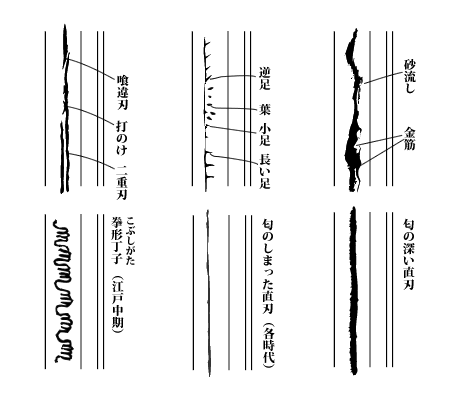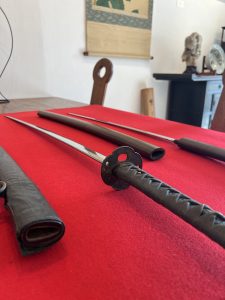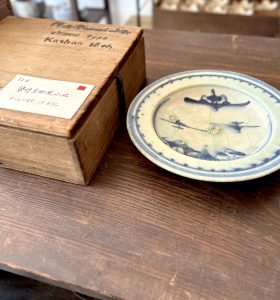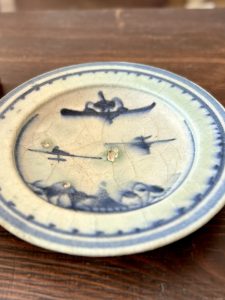寝不足の朝にかぎって(愛知県名古屋市千種区姫池通 骨董買取 古美術風光舎)
2024.06.20
皆さまこんにちは、スタッフYでございます。
このところ日が昇るのが早く、早々に目が覚めてしまいます。
昨夜は寝付くのが遅かったので、もう少し寝ていたかったのですが、また、そんなに日限って目の前の電線にヒヨドリでしょうか。今朝も朝から美声で鳴いておりました。昨夜は寝つきが遅かったので今朝はどんよりとした寝覚だったのですが、先日きいた雑学ネタのおかげで、「朝から鳥の鳴き声のせいで寝られなかった…。」などと、鳥のせいにはちょっとできなくなりました。
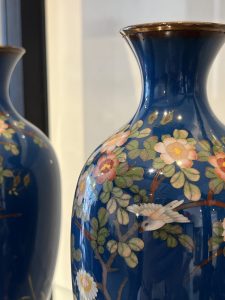
先日TV番組で、何故鳥が朝に鳴くのかという問いがありまして。ちょっとおさらいをしたいのですが、まだ存じ上げないかたは「なるほど…」と、うなずきながらお付き合いください。
実は、鳥というのはクリアな音質のために朝早く歌うようなのです。クリアとはなんぞや?という前に、まずは鳥の鳴き声について知っておかなければなりません。
鳥の鳴き声は、基本的には短いものです。「自分はここにいるよ!」や「危ないぞ!」と伝えるためにキーキー、ガーガー鳴いたりすることを、鳥たちは生まれた時から知っております。歌うのはオス鳥が多いですが、時々メス鳥が歌うこともあり、幼い鳥は、生まれた時から鳥の歌を知っているわけではないため、大人の鳥の真似をして学んでいかなければなりません。オス鳥はメス鳥を惹きつけるために歌うこともありますが、ほとんどの場合、ほかのオス鳥が自分の陣地に入らないようにするための警告として歌います。
ですから人間にとっては美しい歌であっても、実際にはあまり美しくないメッセージも入っているかもしれませんね。 これで鳥が歌う理由がわかりましたが、ではなぜ朝に歌うのでしょうか。鳥の鳴き声は一年中聞こえますが、鳥の歌をもっともよく耳にするのは春です。
とくに早朝には、より大きな声で何度も歌います。専門家は、この現象を「夜明けコーラス」と呼んでおり、音の綺麗さと関係していると考えています。夜が明けたら太陽が土を暖め、そして空気を暖めていきます。時間が経つにつれて、暖かい空気が上昇し、冷たい空気の層と混ざり、空気の分子が異なったスピードで動き回り、大気の動きを乱します。
実は、この動乱が鳥の歌の邪魔をするため、音質を下げてしまうようなのです。同じ種類のオス鳥でも、歌がまったく同じというわけではありません。一羽一羽がそれぞれ少し異なるバージョンで歌っており、それはほかのオス鳥と区別をつけてメス鳥にアピールするためであり、それにはクリアな音質が不可欠というわけです。だから複雑で綺麗なメッセージを送るには、大気の動乱がない早朝が一番適しており、さらに朝歌を歌うことは、オスが夜を生き残ったという意味があるのに加えて、朝ご飯を探す前にゆっくりして歌う余裕があるという意味も含まれているよう。
つまり、メスに健康的なかっこよさもアピールできるというわけであります。あさからどんよりと起こされる人間もたまったものではありませんが、朝から生存競争のかかったアピールをしなければならないオス鳥もけっこう大変なようで笑。
そんなわけで、少し気持ちをおおらかにしてお布団の中から「夜明けコーラス」を聞いておりました。そんなわけで、ちょっと眠いですけど。
それではごきげんよう。
Hello everyone, this is Staff Y.The sun rises early these days and I wake up early.Last night I was late getting to sleep and I wanted to stay in bed a little longer. Also, is it a shorebird on the power line in front of me so early in the day?It was singing beautifully this morning as well.
I fell asleep late last night and woke up this morning with a dull sleep, but thanks to the miscellaneous information I had heard the other day, I was able to say, “I couldn’t sleep because of the birds’ singing in the morning…” and so on. Thanks to the miscellaneous information I heard the other day, I can no longer blame it on birds.The other day, a TV program asked why birds sing in the morning.
If you are not familiar with it, please nod your head and say, “I see….Actually, birds seem to sing early in the morning for clear sound quality. What is clear? Before we can answer that question, we first need to know about birdsong. Bird calls are basically short. They are usually short, like, “I’m here! or “Watch out! Birds know from birth that they squeak and warble to communicate, “I’m here!Young birds do not know bird song from birth, so they must learn it by imitating adult birds.Male birds sometimes sing to attract female birds, but mostly they sing as a warning to keep other male birds from entering their territory.
So even though the song may be beautiful to humans, it may actually contain a not-so-beautiful message.Now that we know why birds sing, why do they sing in the morning? Birds sing all year round, but it is in the spring that we hear their songs most often. Especially in the early morning, they sing louder and more often. Experts call this phenomenon the “dawn chorus” and believe it has to do with the cleanliness of the sound.At dawn, the sun warms the soil and then the air.
Over time, the warm air rises and mixes with the cold layer of air, causing the air molecules to move around at different speeds and disturbing the movement of the atmosphere. In fact, this turbulence interferes with the bird’s song and seems to reduce the sound quality.Male birds of the same species do not sing exactly the same song. Each bird sings a slightly different version to distinguish it from other male birds and to appeal to female birds, for which clear sound quality is essential.
So the best time to send a complex and beautiful message is early in the morning when there is no atmospheric turbulence, and furthermore, morning song seems to mean that the male has survived the night and has time to relax and sing before looking for breakfastIn other words, it also appeals to the females in a healthy and cool way.It is not easy for humans to be woken up in the morning, but it is also hard for the male birds that have to compete for survival in the morning.
So I relaxed a little and listened to “Dawn Chorus” from my futon. I am a little sleepy
Good day to you all.
*******************
ご実家の整理やお片付けなどをされている方のご相談などが多くございます。
お片付けなどくれぐれもご無理のないようになさってくださいませ。
風光舎では古美術品や骨董品の他にも絵画や宝石、趣味のお品など様々なジャンルのものを買受しております。
お片付けをされていて、こういうものでもいいのかしらと迷われているものでも、どうぞお気軽にご相談下さいませ。
また風光舎は、出張買取も強化しております。ご近所はもちろん、愛知県内、岐阜県、三重県その他の県へも出張いたします。
まずは、お電話お待ちしております。
愛知県名古屋市千種区姫池通
骨董 買取【古美術 風光舎 名古屋店】
TEL052(734)8444
10:00-18:00 OPEN

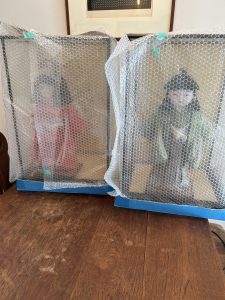
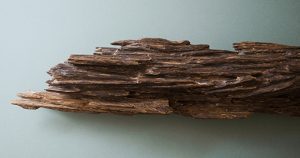

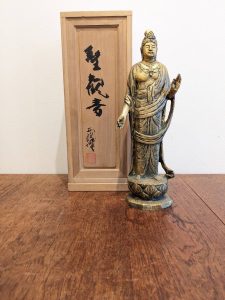
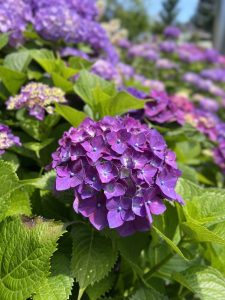

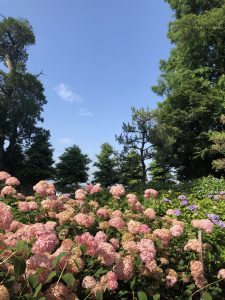
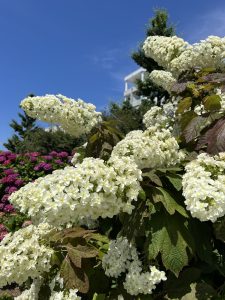

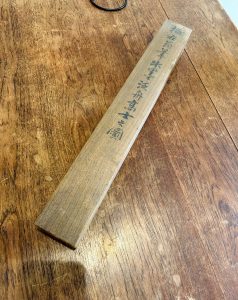

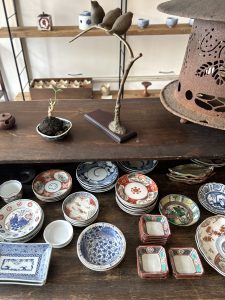
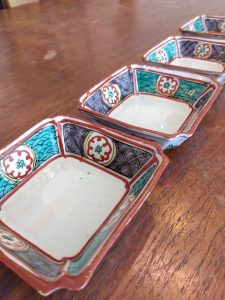
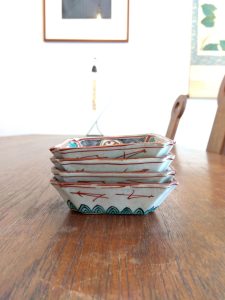

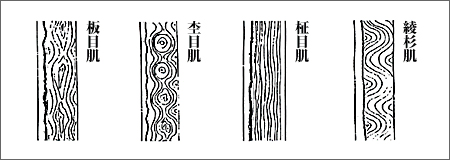 (刀剣博物館HPより)
(刀剣博物館HPより)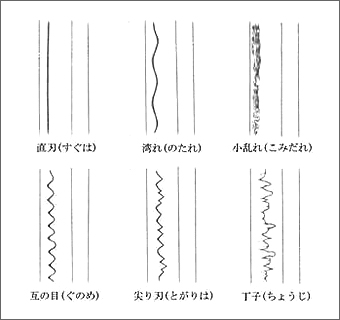 (刀剣博物館HPより)
(刀剣博物館HPより)